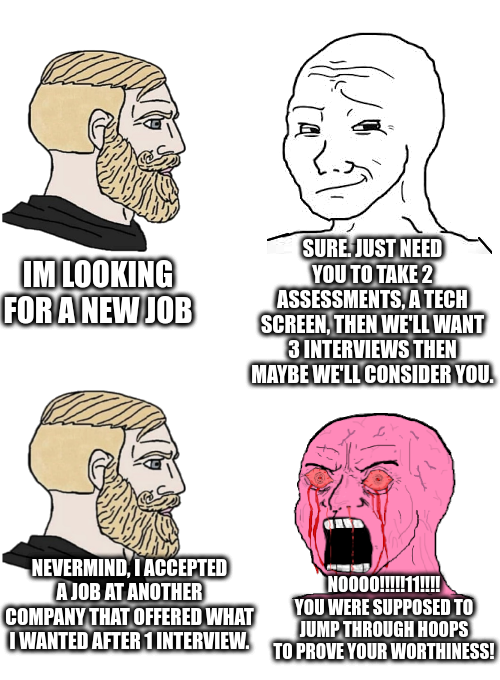Three times in my career I’ve rejected job offers because I didn’t feel the interview process was rigorous enough.
Straight out of school, the company did not ask me any challenging interview questions. I walked away thinking: “They’re not going to challenge me. I’m not going to grow working here.”
Another company did not ask me any questions about what I wanted or why I was interviewing with them in the first place. I walked away thinking: “This place has no soul. They’re not going to care about building my career.”
Later in my career, every interview focused on my resume and not much else. I walked away thinking: “Everyone here must just get hired based on their resume.”

This meme (above) has been making the rounds lately on reddit, and while I appreciate the sentiment behind it, I personally could not imagine accepting a job offer somewhere after a single interview, especially if I didn’t know anyone at the company. The market for talent is growing more competitive every day, but as a candidate you should consider if the company is looking to just put a warm butt in their seat, or actually help build your career.
To employers, a rigorous interview process should convey to a candidate a commitment to excellence in both who you let into the organization and how people will be treated once they join.
To candidates, understand that rigor means the employer cares about mutual alignment and shared success, and not just jumping through arbitrary hoops as the meme suggests.
Originally posted on LinkedIn Pulse.